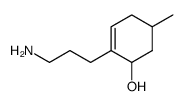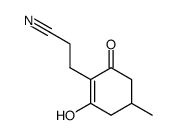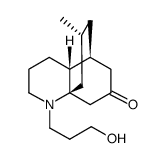| In Vitro |
Lycopodine (5.22-78.3 μg/mL; 12 hours) has 50% viability at 57.62±0.086 μg/mL and 51.46±1.43 μg/mL for PC3 and LnCaP, respectively[1]. Treated with Lycopodine (74-222 mM; 12 hours), the apoptotic index is with respect to the gradual increase in doses for the PC3 and LnCaP cells[1]. Lycopodine (74-222 mM; 12 hours) induces cell cycle arrest at G0/G1 phase in PC3 and LnCaP cells[1]. Lycopodine (0-200 µg/mL; 48 hours) shows cytotoxicity to HeLa cells in a dose and time dependent manner. However, Lycopodine shows minimal cytotoxic effects in normal peripheral blood mononuclear cells (PBMC) even at the highest dose (200 µg/mL)[2]. Lycopodine (100, 200 µg/mL; 24 hours) increases level of Bax and decreases the mitochondrial cytochrome c. This is followed by an increase in expression of cytochrome c in cytosolic fraction. Lycopodine also cleaves the caspase-3 in the total cell lysate, while the expression of Bcl-2 is down regulated[2]. Cell Viability Assay[1] Cell Line: PC3 and LnCaP cells Concentration: 5.22-78.3 μg/mL Incubation Time: 12 hours Result: Reached 50% viability at 57.62±0.086 μg/mL and 51.46±1.43 μg/mL for PC3 and LnCaP, respectively. Apoptosis Analysis[1] Cell Line: PC3 and LnCaP cells Concentration: 74, 148, 222 mM Incubation Time: 12 hours Result: The apoptotic index was with respect to the gradual increase in doses. Cell Cycle Analysis[1] Cell Line: PC3 and LnCaP cells Concentration: 74, 148, 222 mM Incubation Time: 12 hours Result: Arrested growth of the cells at G0/G1 phase in the case of PC3 and LnCaP cells. Cell Cytotoxicity Assay[2] Cell Line: Hela cells and PBMC Concentration: 0-200 µg/mL Incubation Time: 48 hours Result: A linear increase of the cytotoxicity was along with the increase of time of treatment and also of the dose. Western Blot Analysis[2] Cell Line: HeLa cells Concentration: 100, 200 µg/mL Incubation Time: 24 hours Result: Increased level of Bax and decreased the mitochondrial cytochrome c.
|

 CAS#:83532-71-2
CAS#:83532-71-2 CAS#:83532-69-8
CAS#:83532-69-8 CAS#:83532-70-1
CAS#:83532-70-1 CAS#:69060-88-4
CAS#:69060-88-4